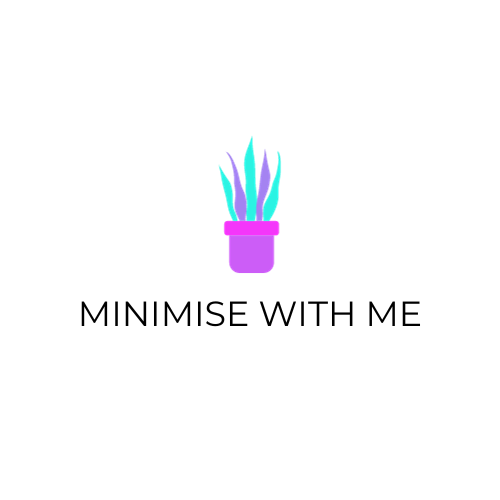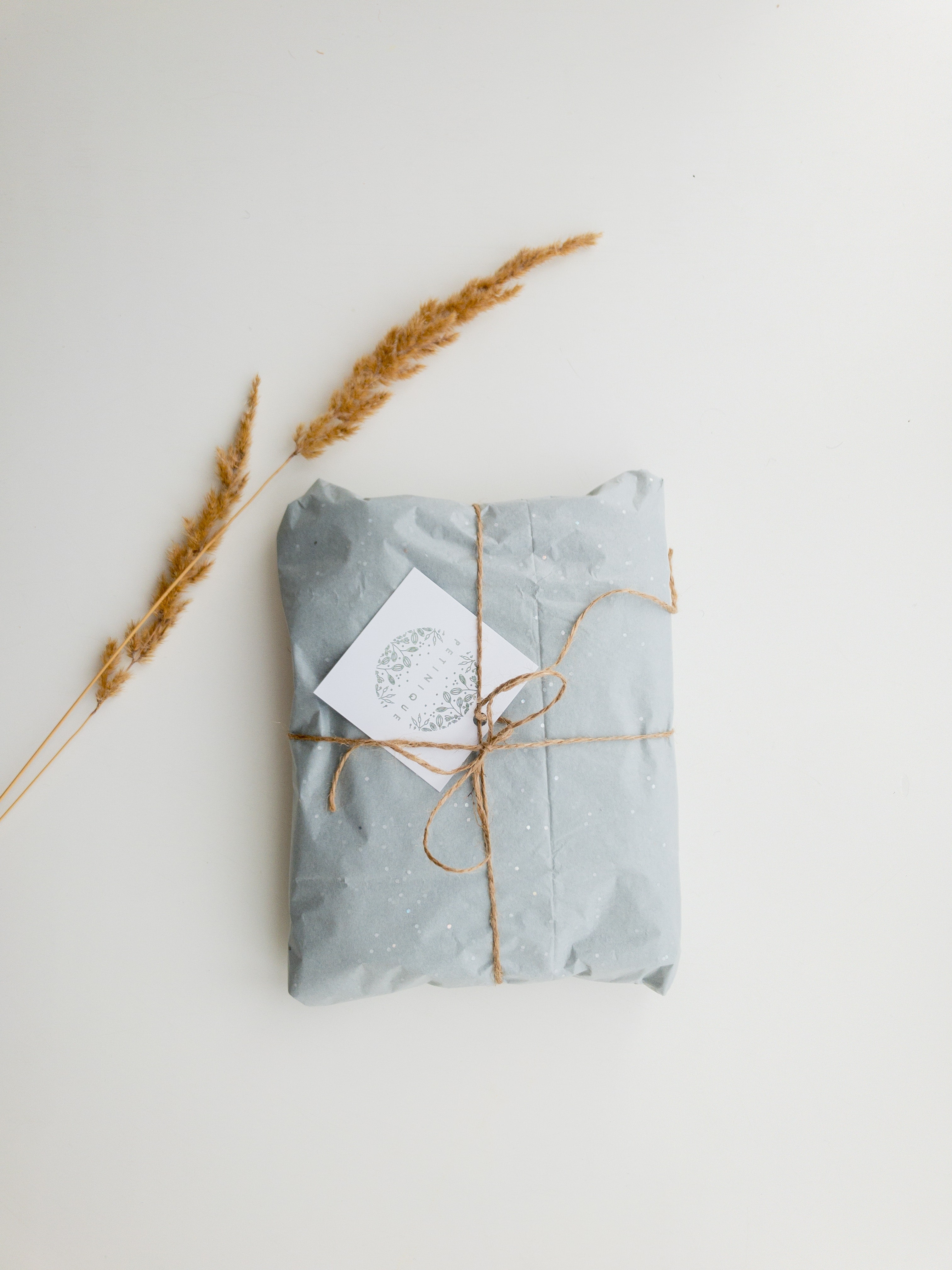It’s Christmas Day and you’ve just been handed a gift from insert various relation to you here. You unwrap it carefully or maybe you rip it open quickly, whatever your gift unwrapping style is, to see that it is something you love. YAY! It immediately #sparksjoy and you feel completely content knowing that the gift giver knew exactly what you wanted or needed.
Unfortunately, the perfect gift isn’t always what’s inside. Sometimes it is just something you really don’t like. Other times you genuinely just don’t need anything. It might be extra towels when you already have an overflowing linen closet or it’s another vase you now need to find a shelf for to make sure your loved one can see you enjoying it when they visit. Maybe it’s not you, it’s your kids sitting in front of a mountain of new stuff, well meaning Grandparents, Aunties and Uncles got them that fills you with dread at the thought – Where on Earth is all this stuff going to be stored?
It’s no where near the end of the world by any means, but at times like Christmas, when you might be swapping gifts with large groups of family along with your partner and children, the stress and anxiety over the potential clutter and what to do with all that extra stuff can cause overwhelm. Not to mention that pang of guilt you feel when you truly appreciate the thought of your loved one going out of their way to buy you something but the reality is that you know you don’t have the space or will never use it.
Let’s face it, no one can read our minds and know exactly what we want or need -or don’t want or need – no matter how close they are to us. Sometimes we really are just taking a stab in the dark and hoping that what we have gotten our loved one is something they will love and find value in.
Surely there has to be a better way.
Over the past three years of minimising over 70% of our stuff (that’s an educated guess, I didn’t keep track dammit) I noticed a bit of a trend in some of the stuff I was letting go. Of course the majority of it was stuff we had bought that we no longer needed (possibly never did ;)). But, every now and then we were letting go of something that had been gifted to us.
Now don’t get me wrong, we of course always thoroughly appreciate the thought that goes into picking out a gift and for the most part we did try and use or display the gifts, but in the end, sometimes you do just want to pick out your own set of matching tea towels or bed sheets.
The reality is, that everyone gets to that point where you really don’t need more stuff. There is only so much space in our homes! And if you are anything like me, when you need something you more than likely will go out and buy it yourself (and research it like crazy ‘:)) and pick the set that you absolutely love.
I know I myself have always tried to put a lot of thought into gifts for others and always worry myself silly, thinking – did I buy the right thing? I’d feel terrible if I had bought someone something that they had no use for and had been holding onto indefinitely out of guilt that I might be upset if they didn’t keep it. I think that’s probably a guilt we’ve all felt at some point in our lives…
And so, I thought with a little bit of guidance from The Minimalists gift giving approach why not change the norms around gift giving.
There has to be a better way to gift with intention and minimise gift clutter entering our homes.
Here’s 8 Ways to Minimise Gift Clutter and Give More Intentional Gifts to help save you the worry, stress, and mystery of giving a gift that adds value.
8 Ways to Minimise Gift Clutter and Give More Intentional Gifts
- Communicate your values
First and foremost bring up the conversation. Let your family and close circle of friends know your new values and that you are trying to declutter, minimise the excess and simplify. This will help them be aware, in a non-confronting manner that you are trying to minimise gift clutter amongst other forms from taking over your house. I dropped hints about getting rid of over half our stuff and how we preferred our new found space over all that excess stuff (plus it was pretty obvious from the blog ;)).
This planted the idea in our inner circle that we really didn’t need anything, rather than expecting loved ones to read our minds and saved being overwhelmed when more unexpected stuff came into our home. And it really can add up each birthday, Christmas per person in your household and so on.
If you are bothered by your kids getting a mountain of toys each Birthday and Christmas, and the ensuing free for all that happens from there, communicate your values to loved ones ahead of time. You might be able to encourage family to stop at one gift, rather than going overboard and help you keep your sanity. Or as i go into more detail below, suggest a consumable or experience gift instead.
2. Start the trend to Ask
Minimise gift clutter for yourself and others by asking friends and family what they want for their birthday or Christmas or whatever event it is. This takes away any guess work, and worry that you might buy something they’d hate or didn’t need and bonus – it’s saves you time spending hours looking for the perfect gift. If you hate shopping like me, any way to get in and out quicker is a winner!
Of course, at first it might seem a bit out of the ordinary and uncomfortable to directly ask someone what they want and they might not even know what to ask for, but it will feel great to give a gift that is truly needed rather than trying to guess. And it goes both ways, once you set the norms to ask people directly, people will feel more comfortable to ask you what you might need.
3. Have a Gift Wish List
To help you and your loved ones minimise gift clutter, it’s going to take a team effort. If you are really bad at thinking of things you want or need when that next event rolls around, a great way to help family and loved ones to give you and your family more intentional gifts and to minimise gift clutter entering your home is to keep a gift wish list.
As you think of things you or your kids might need or want coming up to a birthday or a special occasion take note of that item and keep them as suggestions for when people ask you what you or they might need. And don’t forget to note gift ideas down as you see them for others. So many times I have come across awesome gifts for someone in particular and then come the time to buy them, I’ve completely blanked.
I had a chat with my nephew last night about how he was bored of his current book collection and he mentioned he wanted more Harry Potter books to read. So I made a quick note today to remind myself to get that for him for Christmas. It’s something I know he will appreciate and love and it means a lot to us as we can gift him books that bought us so much joy reading. And come Christmas we won’t have to pull our hair out trying to pick out the perfect gift.
A gift wish list is a great way to keep track of things that would add value to you and your family and make it easier for a loved one to get you the right gift.
4. Gift consumables.
After decluttering my own seemingly endless crap, I wanted to resist adding to others clutter. The thought of buying stuff for other people like my parents, when I knew how much stuff they already had, didn’t sit with this minimalist. Instead of buying loved ones a new ornament for them to display and dust around for the next decade (unless you know that is what they’d really love), or another book to squeeze onto their over flowing bookshelf, consider gifting them something consumable that they can enjoy and let go once it is used up.
Consumable gifts are also a great opportunity to show someone you love how much you really know them. Some consumable gift ideas to help minimise gift clutter and gift more intentionally are:
- a bottle of their favourite wine
- subscriptions to their favourite services; Audible, Kindle, Netflix or Spotify are great examples.
- their most adored chocolates
- a high quality coffee
- a gift pack of beauty supplies
- home made hot chocolate
- art and craft supplies and activities
Keep in mind that gifts don’t have to be something physical that are kept indefinitely. It’s not less of a gift or less special if it is used up. And don’t forget, it doesn’t have to be a boring box of chocolates (not that there is anything wrong with chocolates, unless they contain almonds – uck!).
One year my friend filled a jar with different lollies and took out all the ones she knew I didn’t like. It was just the best gift ever in my eyes, it was not only consumable but showed me that she knew me well enough to know what lollies I liked and hated and I have not forgotten that gift more than 10 years later 🙂 And as they say, it’s the little things that really count. Check out these 10 Minimalist Gift Ideas for more ideas.
5. Gift experiences.
Experiences make great gifts as they not only minimise gift clutter completely from entering your home, but are something that can be shared and remembered for a long time to come.
Think back to Christmas two years ago. Do you remember what you were given?
Most likely not, but you are more likely to recall the concert you were given tickets to. And aren’t memories the best gift of all? 🙂
There are now so many options available to gift experiences and a good range for all budgets. And it’s a great way to break away from gifting the same old gifts.
Some options for experience gifts are:
- movie vouchers
- a museum or zoo membership
- tickets to a concert or musical
- a cooking class
- yoga lessons or PT lessons
- a massage or float tank
You can even donate to someones upcoming holiday or offer to cover the cost of a tour they want to take. They are great gifts for all occasions.
The next time your anniversary rolls around skip the soft toy and new photo mug that’ll soon go in the back of your closet and take your partner out for dinner and buy some flowers. They’ll be just as appreciated and minimise that gift clutter that accumulates year after year.
6. Gift your time
Another gift that is often under-utilised is the gift of time. If you have a special talent or skill or just can offer a helping hand, gift your time to a loved one. And if you need a helping hand you can always ask for some time in place of a physical gift.
Some examples are:
- Babysitting for a night
- Help your parents minimise their clutter
- Cook a few meals for a new mum
- Clean the house for a friend who is stressed or recovering from an injury
- Offer free lessons to someone e.g. guitar, baking, sport coaching
- Help out with some house projects if you are handy
7. Gifting money thoughtfully.
I know there are some people who are not keen on receiving money in a card (and we do always make sure the card is extra awesome!) and if that is the case maybe skip this one, but for me, someone who struggles to ask for anything and likes to think about things for months before parting with my cash it has always been preferable.
For our wedding we asked guests to donate to our wishing well which allowed us to have some extra spending money for our Honeymoon in Europe. This meant much more to us than to have more kitchen appliances that we already had as we could keep those memories long past throwing out and old toaster.
For my 21st I asked family to donate to my trip to New Zealand rather than buying me other gifts as I didn’t need anything, but was really excited to spend my birthday overseas. That was all I wanted. Sure, I don’t have necklace to remind me that I turned 30, but again I have amazing memories of my two weeks in New Zealand with my husband and all those photos to look back at.
Maybe you are savings up for a new camera or something else really important to you and would appreciate a donation to your savings account over any other random trinket. I’ve genuinely found people are happy to help you save up for something as their gift when they know there is something you really want. And it’s great to do the same when it’s your turn to find the perfect gift so pay attention and keep thinking outside the box with your gifts.
8. Ask for no gifts.
I’ve never really felt that comfortable about receiving gifts. Especially if I know someone could have used the money more than I could have used the gift. If you feel similarly you can always let loved ones know that you appreciate the thought, but they don’t need to get you anything.
A comprise could be that they in place of a gift just come out and have a nice dinner or drink with you. Company is really the best gift! And if that special someone still insists on getting you something you can always ask them to donate to your favourite charity.
This weeks comment question: Do you do any of the above to minimise gift clutter and give gifts more intentionally? Let me know in the comments below 🙂
[Photo: Nynne Schroder on Unsplash.com]
If you found value in this post I would be super appreciative if you could share it with others who might also find value in it 🙂
![]()








